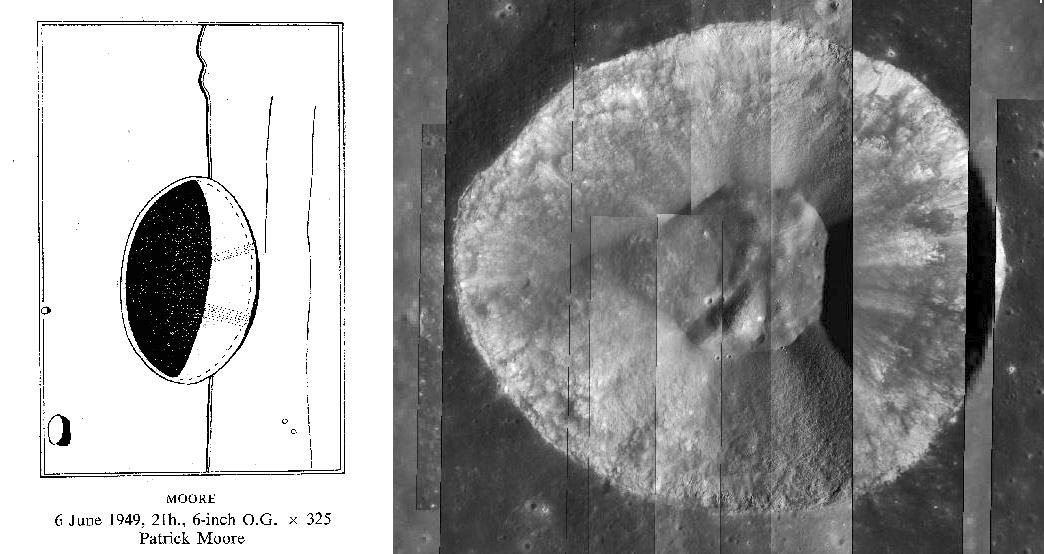December 15, 2012
Moore

drawing from The Moon by Dr H. Percy Wilkins, F.R.A.S. and Patrick Moore, F.R.A.S., 1955,p. 131, and LRO image from " rel="nofollow QuickMap
Sometime back in about 1950, whilst he was an active lunar observer, Patrick Moore took the liberty of naming a crater on the Moon after himself. Obviously the name never stuck, but now with his passing I believe that a fitting tribute to him would be the reinstatement of his name to this crater. In his 1953 book, Guide to the Moon, Patrick Moore describes the crater Moore as, A small crater 12 miles across, east of Bullialdus. It interrupts a prominent cliff. There are two dark radial bands to the inner east wall.
In the later 1955 The Moon tome in conjunction with H Percy Wilkins, Patrick describes the crater Moore as follows:
MOORE, -437 -395 [English selenographer and one of the Authors, 1923 - ]. This was formerly known as Agatharchides A, and lies to the north-west of Hippalus on the most westerly of the three great valley-clefts on the western side of the Mare Humorum. There is some object on the western part of the floor, probably a hill and also two dusky bands on the inner east wall, discovered by Moore with a 6-inch refractor in 1949. With the great 33-inch Meudon refractor, Moore saw some small bright and circular patches inside the crater; the general effect is very much like a miniature Aristarchus... A modern co-ordinate lunar location for Agatharchides A is Latitude 23.2°S and Longitude 28.4°W. The diameter of Agatharchides A is 16 km.
" rel="nofollow Graeme White
Notes by CAW: Moore's simple drawing and description accord well with the detailed LRO image (rotated to have south up as in lunar maps before 1960). There are a number of low albedo landslide areas on the crater's right inner wall; simplifing that complexity into two dark bands seems acceptable. The statement that there is an object, probably a hill on the western (right) side of the floor is not quite right positionally, but indicates correctly that the crater floor is not simply flat with a small central peak.
Graeme's suggestion that this crater be named Moore would break two IAU nomenclature rules: that lettered craters not be renamed, and that duplication of names is not allowed - another Moore already exists. It is possible that in 3 years the IAU might agree to add Patrick Moore as a person honored by the existing farside Moore crater.
Related Links
Rükl plate 53
21st Century Atlas chart 23.



